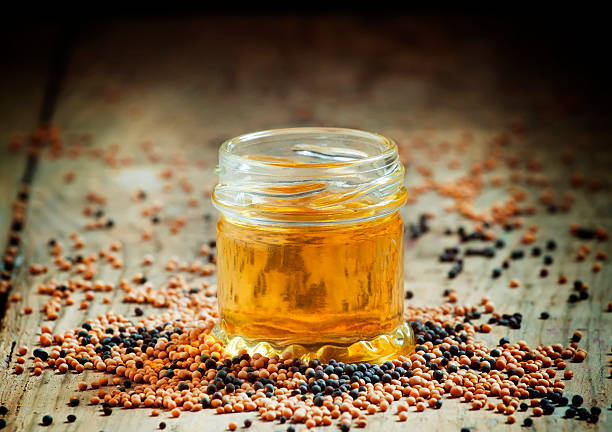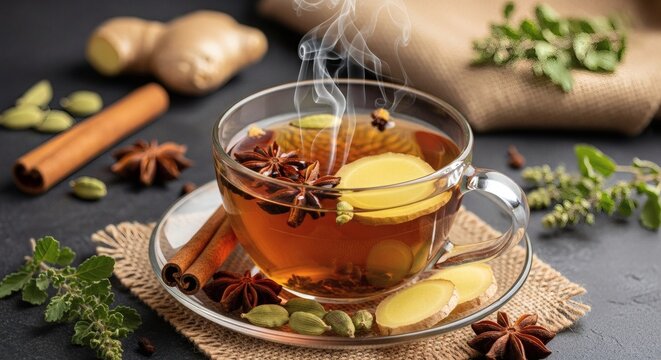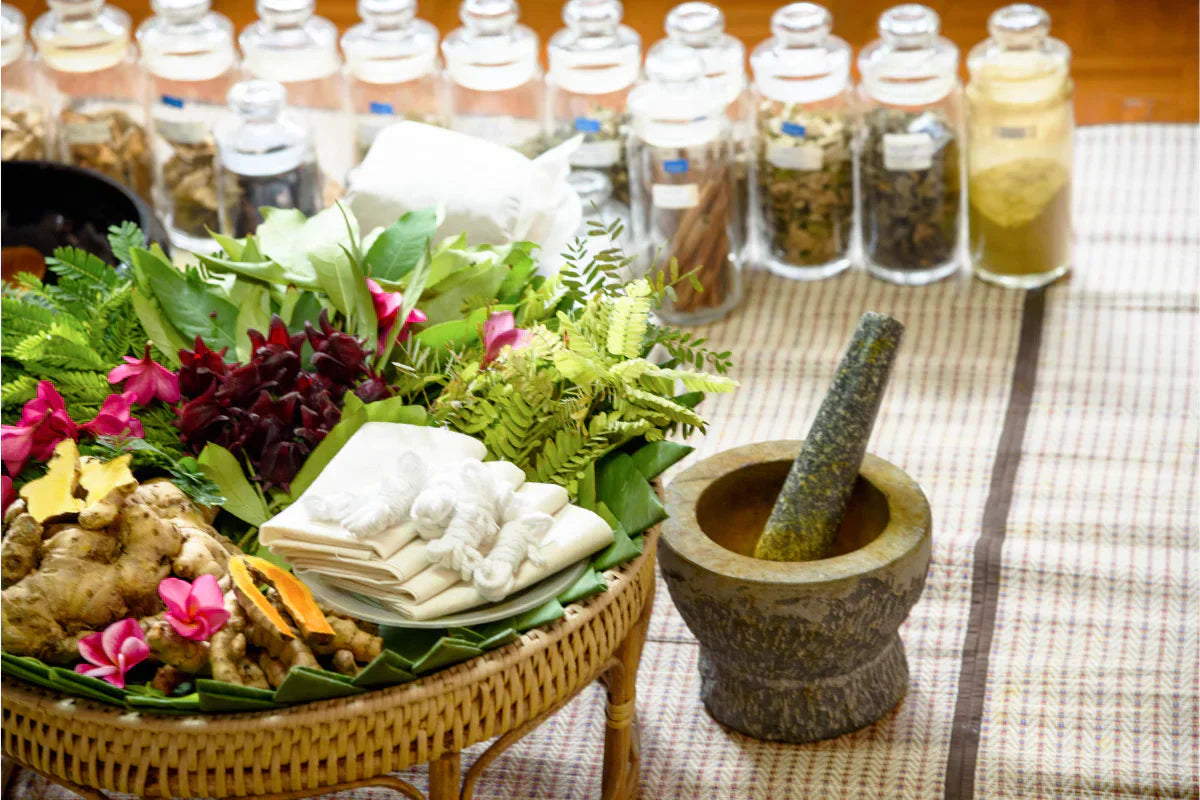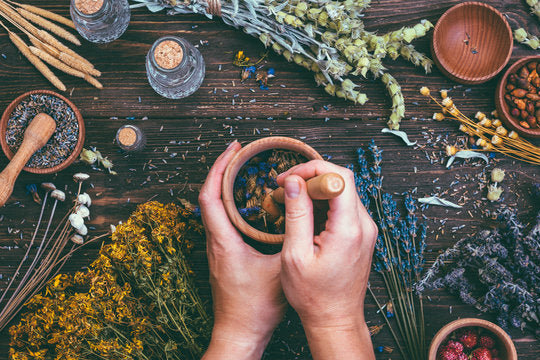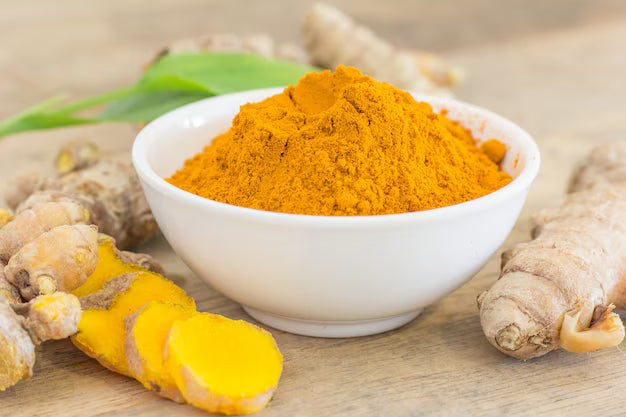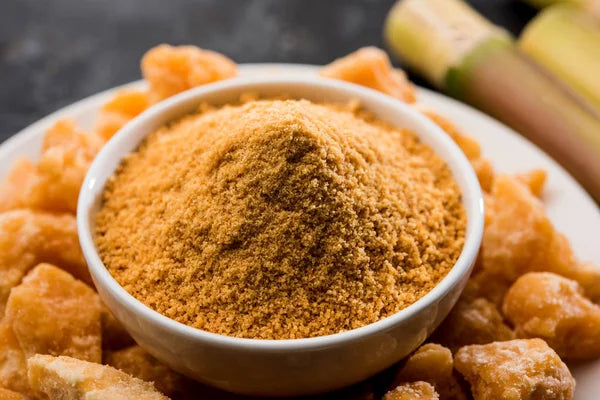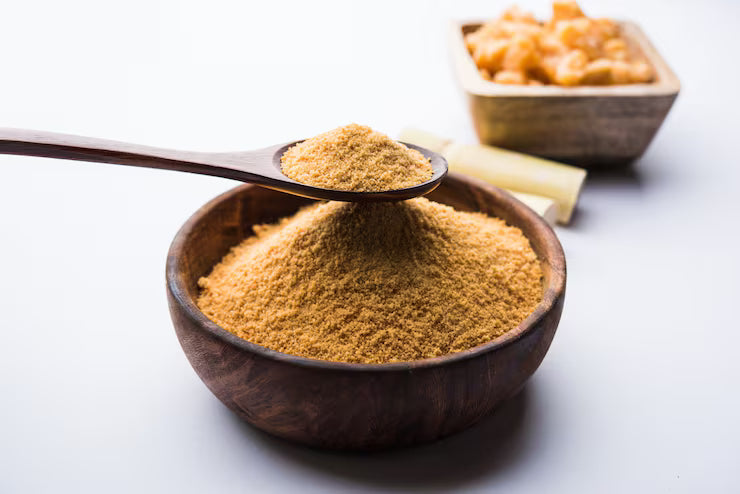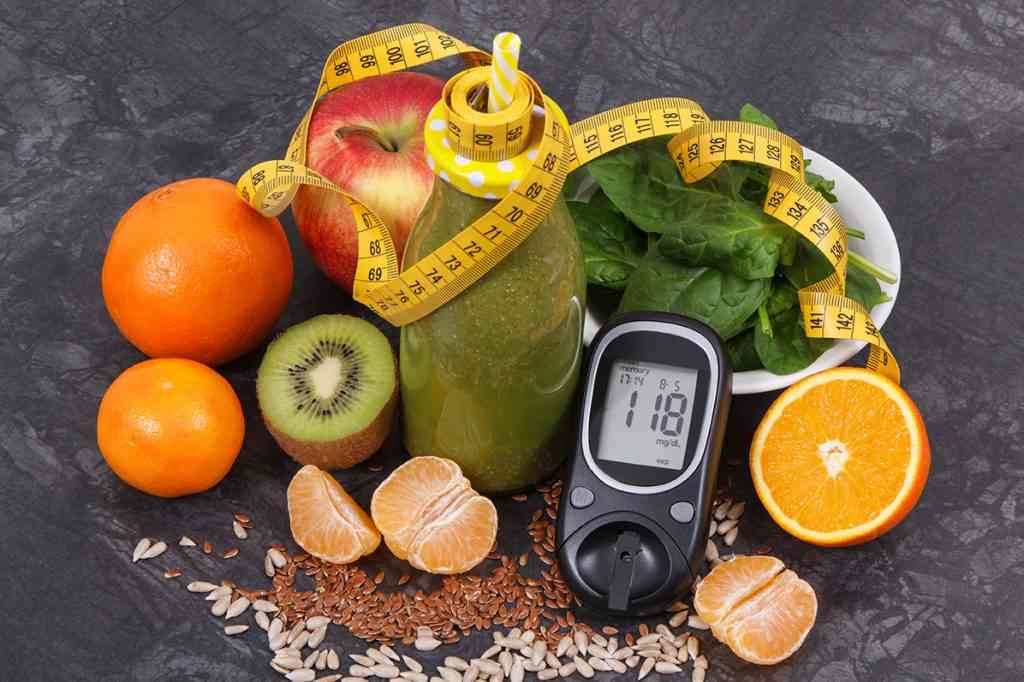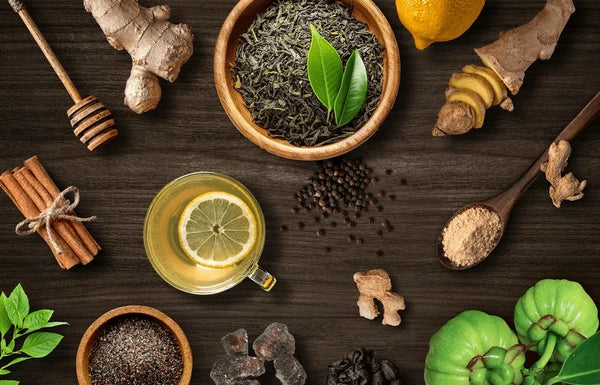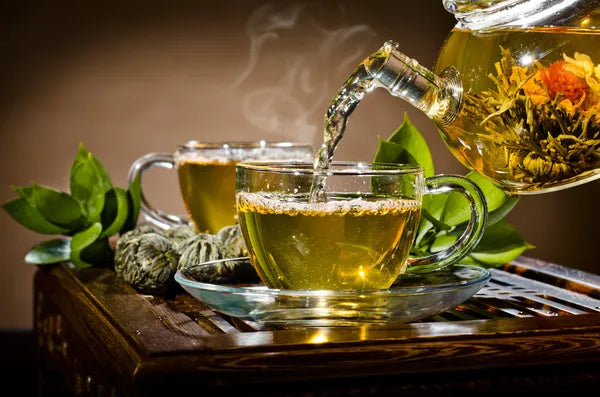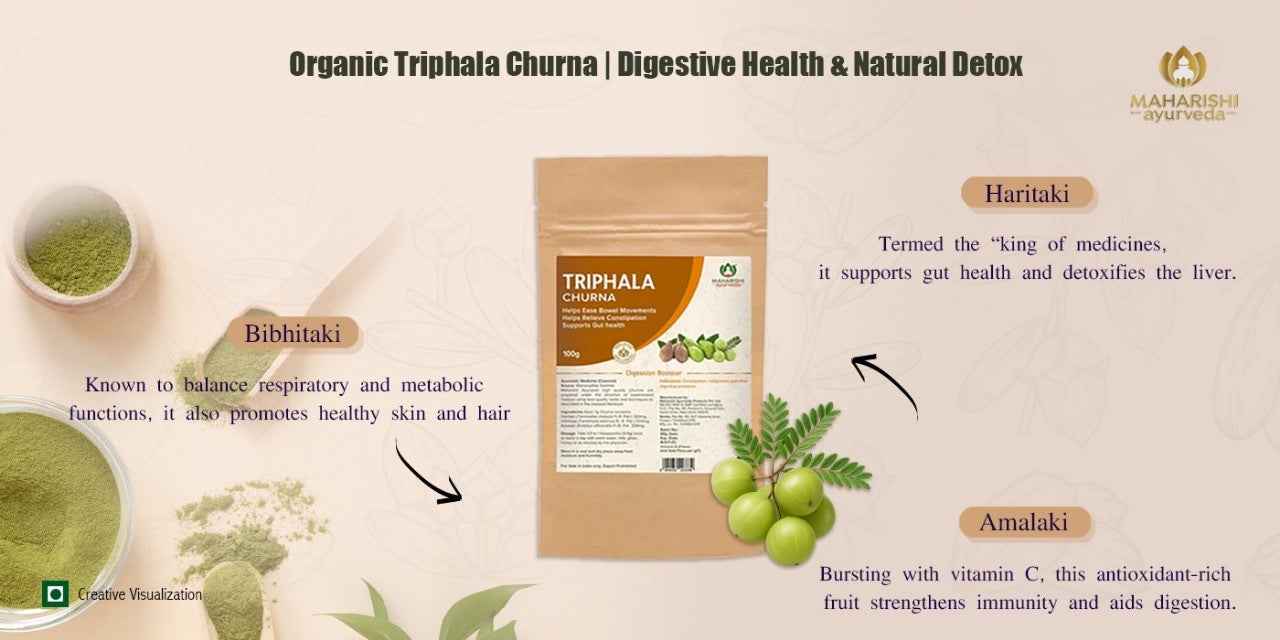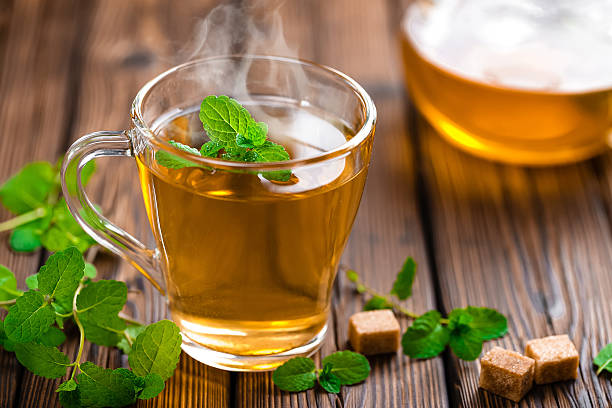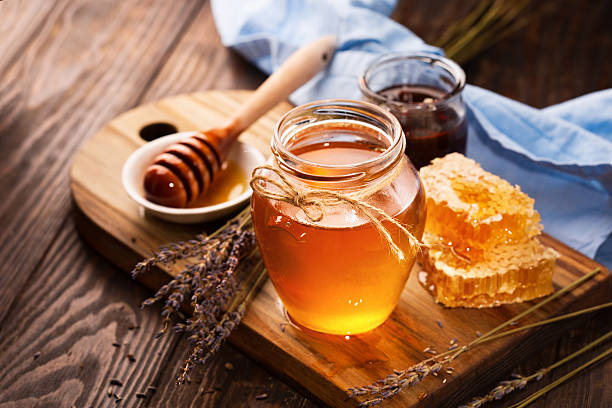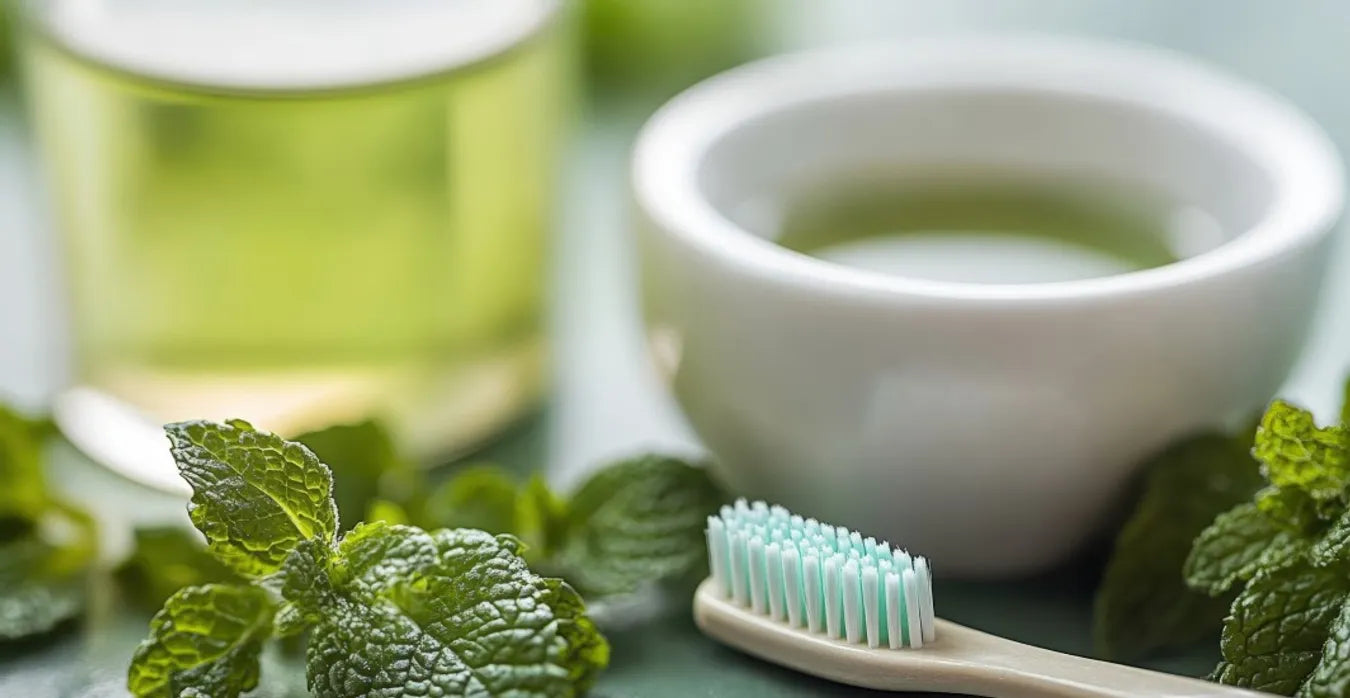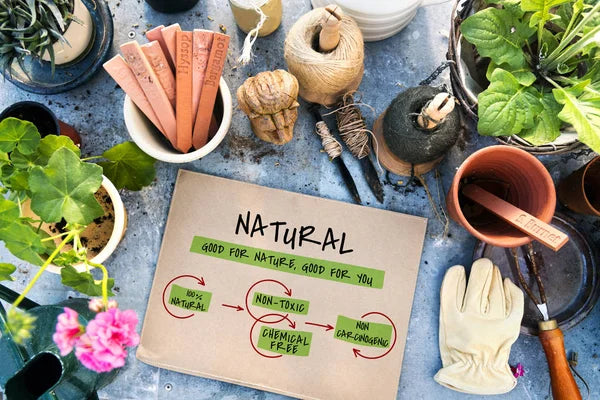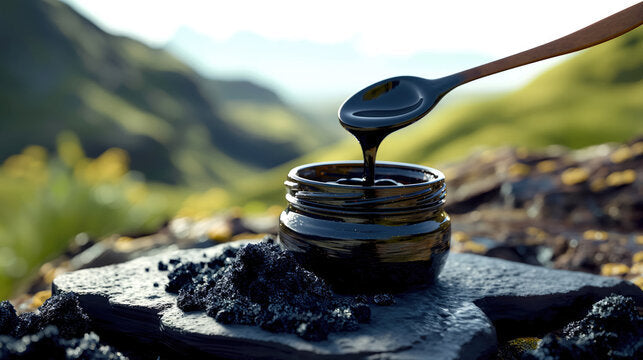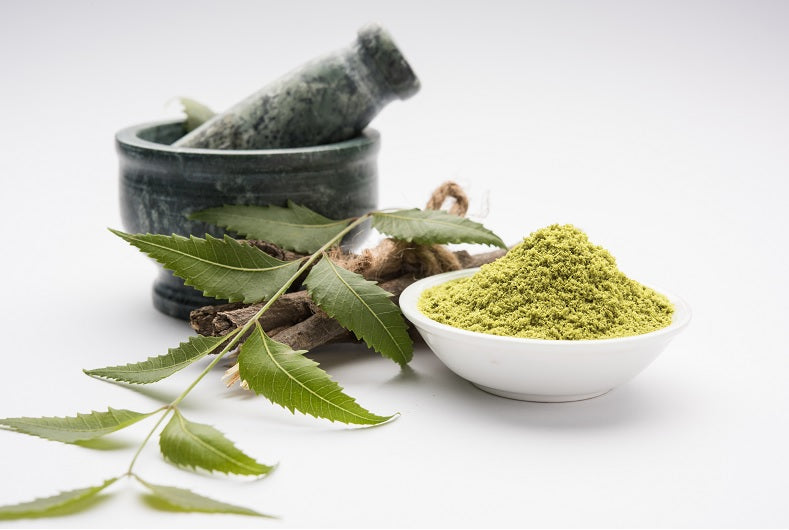-
Anuvasana & Asthapana Basti – enema using fatty substances such as medicated oils
-
Niruha Basti – enema using herbal decoction, honey, rock salt, herbal paste, and fatty substances
-
Uttara Basti – administration of medicinal substances through the urethral or vaginal route
Popular Articles

Panchakarma Therapy – Treatment Steps and Benefits
Tue, Dec 09, 25
What is Panchakarma?
Panchakarma is considered a profound healing modality in Ayurveda, known for its ability to promote detoxification, rejuvenation and restoration of optimal health. It is a comprehensive approach that goes beyond simple detoxification and involves balancing the body, mind, and spirit. The word ‘Panchakarma’ literally translates to ‘five actions’ in Ayurveda.
These five procedures are:
-
Vamana (therapeutic emesis)
-
Virechana (purgation)
-
Basti, including Anuvasana & Asthapana (medicinal enemas)
-
Nasya (nasal administration)
-
Raktamokshan (bloodletting)
The therapies are typically conducted in a controlled environment, under the guidance of experienced Ayurvedic practitioners. The treatments are personalised according to an individual’s specific needs, body type, and imbalances. They are often accompanied by lifestyle modifications, as well as supportive therapies such as herbal and mineral formulations and Yoga. Unlike quick-fix solutions that may offer symptomatic care, Panchkarma goes to the root of ailments – accumulated toxins in the system – and helps heal and rejuvenate by removing the same.
What Are Panchakarma Therapies?
Vaman therapy
In this, the patient first undergoes internal and external snehana (therapeutic lubrication) and swedana (induced therapeutic sweating through steam) for a few days, using therapeutic oils, heat treatments, and specific Ayurvedic formulations. This helps dislodge toxins and push them to the digestive tract.
The patient is then given vamaka (emetic) medicines and herbal decoctions to induce controlled vomiting, which expels the excess Kapha and metabolic wastes. This treatment is traditionally recommended for Kapha-dominant disorders - conditions linked to congestion, heaviness, and mucus buildup, such as obesity, asthma, and hyperacidity. It brings relief by clearing the respiratory and gastrointestinal passages and Kapha aggravation.
Virechan therapy
In this, the disposal of toxins is brought about by the clearing of the bowels. As in the Vamana therapy, Snehana (therapeutic lubrication) and swedana (induced therapeutic sweating) treatments are administered for a few days before the treatment. The patient is then given a natural purgative to clear the stomach of toxins. The treatment is prescribed fundamentally for Pitta-dominated conditions such as asthma and skin disorders.
Basti therapy
Using medicinal enemas helps manage several complicated and chronic ailments. Ayurvedic decoctions, oils, ghee or milk are inserted therapeutically into the system through the rectum to draw out deeply embedded toxins.
The larger umbrella of Basti therapies include:
This treatment is particularly effective for Vata-dominated conditions such as arthritis, and constipation. It is also effective in gaseous distention of the abdomen, anorexia, and sharp pain in the anal region.
Nasya therapy
In Ayurveda, the nose is considered to be the gateway to the head, and Nasya therapy is believed to influence the prana (life force) that flows through the nasal passages. The administration of oils or other therapeutic substances aims to balance the Doshas (energies) within the body and clear blockages in the nasal passages.
In this procedure, the patient needs to lie down with the head tilted back. A few drops of medicated oil or a powdered substance are instilled into each nostril using a dropper or a special Nasya oil applicator.
The ingredients used in Nasya therapy vary according to an individual's Dosha imbalance or specific health condition. Commonly used substances include herbal oils, ghee (clarified butter), medicated powders, and herbal juices. The head and shoulder areas are given a delicate massage and fomentation, after which, the drops are put in both nostrils.
This treatment is particularly effective in clearing the head area and has several benefits:
-
Clears the nasal passages
-
Effective in sinusitis
-
Relieves headaches and migraines
-
Improves mental clarity and concentration, and helps alleviate allergies and respiratory conditions
-
Sharpens the senses, especially sight and hearing
-
Balances the doshas, particularly Vata and Kapha
Raktamokshan
This time-tested Ayurvedic purification therapy is a form of bloodletting that removes toxic blood (dushta rakta) from the body, boosts circulation and helps balance the doshas, especially Pitta. The therapy is applied to specific areas of the body and is generally used to treat skin conditions such as psoriasis, eczema, and acne; stiffness and inflammation; gout; swelling and pigmentation.
Panchkarma: Pre-cleansing Practices (Purva Karma)
Before undergoing Panchkarma, the body needs to be prepared for the detox process. The lead-up diet needs to be light, warm and easily digestible. Heavy or processed foods must be avoided.
Daily Routine or Dinacharya is recommended. This includes:
Going to bed and waking up at regular timings; practising self-care rituals such as oil massage (abhyanga), and engaging in gentle exercise or Yoga.
Snehana (therapeutic lubrication or oleation) and swedana (induced therapeutic sweating through steam or fomentation) are important and need to be practised for a few days before Panchkarma.
Benefits of Purva Karma
Panchkarma: Post-cleansing Practices (Paschat Karma)
This phase is crucial for restoring agni, consolidating the benefits of the treatment, and preventing complications. Key elements include the Sansarjan Karma, a specific, Vaidya- recommended light diet, critical to restore digestive fire (agni), which may be impacted due to the Panchkarma therapies.
Importance of Paschat Karma
Benefits of Panchakarma
Deep Detoxification: Eliminates accumulated ama (toxins) from tissues and channels, restoring natural balance and supporting healthy organ function.
Dosha Balancing: Helps harmonise all the Doshas, preventing disease.
Rejuvenation (rasayana effect): Strengthens tissues (dhatus), boosts metabolism, enhances immunity, and promotes overall vitality and longevity.
Improved Digestion: Therapies such as abhyanga and snehana kindle agni (digestive fire), improving nutrient absorption and waste elimination.
Stress Relief & Mental Clarity: Calms the nervous system, reduces stress, and enhances focus, sleep quality, and emotional well-being.
Disease Prevention & Management: Helps prevent lifestyle disorders and supports the management of chronic conditions such as respiratory, digestive, skin, and musculoskeletal issues.
Should You Opt for Panchkarma?
The practice is therapeutic for most healthy adults, but particularly recommended for certain groups, these include:
People with toxin accumulation, low digestion or chronic digestive issues, joint stiffness, respiratory issues, persistent fatigue, and lifestyle disorders such as obesity, skin diseases, or metabolic imbalances.
Certain groups need to avoid Panchkarma. These include: Pregnant or lactating women; weak or debilitated individuals, including those with Phthisis or severe wasting conditions, those with a fainting tendency, severe dehydration, extreme emaciation, and patients with heart disease or severely weak gut (this last group needs to specifically avoid Vaman and Virechan therapies).
Particularly for Basti therapy, the following groups need to be extra cautious of particular types of therapy:
-
Those suffering from obesity, skin diseases, or excessive urination (e.g., diabetes) should avoid Brimhana (nourishing) Basti.
-
Weak, emaciated, or dehydrated individuals should not undergo Shodhana (cleansing) Basti.
Can Panchakarma be Practised at Home?
No, this is not advised - strict medical supervision is mandatory. Self-administered Panchakarma can lead to severe complications, especially digestive and neurological. Always consult a qualified Ayurvedic physician and undergo therapies at an accredited Ayurvedic centre.
FAQs
1. Are there side effects of Panchkarma?
Not if properly planned and executed with correct indications and post-care guidelines.
2. How long does Panchakarma take?
Typically, 21–30 days, depending on condition and strength.
3. Can I eat regular food during treatment?
No. A therapeutic Panchakarma diet must be followed for safe digestion recovery.
4. Is Panchakarma good for weight loss?
Yes, especially Basti & Vamana for metabolic balancing.
Popular Posts
View All

/
Panchakarma Therapy – Treatment Steps and Benefits
10 Dec, 2025What is Panchakarma? Panchakarma is considered a profound healing modality in Ayurveda, known ...
Read more
/
Ayurvedic Herbal Rasayana Therapy: How Soon Will You Feel Benefits?
09 Dec, 2025What Is ‘Rasayana’ & ‘Rasayana Therapy’? The term ‘Rasayana’ is composed of two words: ...
Read more
/
Ayurvedic Detox Tips to Beat Pollution This Winter
08 Dec, 2025As the winter cold deepens, the air gets heavier with smog, dust, and toxic fumes. Hazardous leve...
Read more
/
Vegetarian & Vegan: Knowing the Difference in Ayurvedic Products
05 Dec, 2025Ayurvedic View on Vegetarian and Vegan Diets Ayurveda naturally leans toward a predominantly pla...
Read more
/
How to Boost Vigour and Vitality in men with Ayurveda?
03 Dec, 2025There must be many questions in the mind of people that what exactly does vigor and vitality mean...
Read more
/
Pollution causing cough & cold? Try Ayurvedic Home Remedies
02 Dec, 2025The air we breathe has a direct impact on our lungs, immunity, and overall vitality. With rising ...
Read more
/
Why Is This Winter Colder Than Usual? The La Niña Effect Explained
01 Dec, 2025Introduction: Climate Shift Meets Ayurveda If you’re feeling an unusually sharp chill this winte...
Read more
/
Strengthen Your Immunity Naturally Against Winter Pollution
29 Nov, 2025Introduction — Why Winter Pollution Weakens Your Immunity Winter brings cold, heavy, damp, and c...
Read more
/
Ayurvedic Skincare to Repair Pollution-Damaged Skin
28 Nov, 2025Introduction — How Pollution Damages Your Skin The skin is the largest organ and is in constan...
Read more
/
Pollution and Dosha Imbalance: Why You Feel Tired and Congested
26 Nov, 2025How modern pollutants disrupt Vata, Pitta, and Kapha, and what Ayurveda recommends for protection...
Read more
/
Ingredients to Avoid in Regular Toothpaste and Why Ayurdent Is Different
26 Nov, 2025Why Your Toothpaste Choice Matters Oral health is deeply connected to overall health. Research i...
Read more
/
The Ayurvedic Benefits of Castor Oil: From Detox to Digestion
24 Nov, 2025Introduction Castor oil, Eranda Taila, or Arandi Oil, holds a special place in Ayurveda as one o...
Read more
/
Top 5 Ayurvedic Oral Care Tips for Winter
21 Nov, 2025Understanding Ayurvedic Oral Care Imagine a winter morning, the air crisp and cool, with a gentl...
Read more
/
Can People with Acne-Prone or Oily Skin Use Kumkumadi Tailam?
19 Nov, 2025When “Glow Oils” Meet Oily Skin Fears Many people with oily or acne-prone skin hesitate to try fa...
Read more
/
Ayurvedic Massage Oils and Their Therapeutic Benefits
18 Nov, 2025Introduction — The Healing Power of Ayurvedic Oil Massage Ayurvedic body massages (abhyanga) a...
Read more
/
Is Your Detox Ritual Harming You? Know all about Ayurvedic detox vs Juice cleanses
14 Nov, 2025Introduction: The Modern Detox Dilemma Detoxing has become a modern-day ritual, from green juices...
Read more
/
Guggul: Benefits, Uses, and Dosage in Ayurveda
13 Nov, 2025Introduction to Guggul (Commiphora Mukul) Among the vast pharmacopeia of Ayurveda, few herbs hold...
Read more
/
Why Your Body Needs a Detox — The Ayurvedic Science Behind It
12 Nov, 2025When Your Body Speaks Through Fatigue, Fog, and Imbalance When you constantly feel tired, sluggi...
Read more
/
7 signs your body is overloaded with toxins (Ama)
11 Nov, 2025Introduction: When Your Body Speaks in Whispers Have you ever felt tired even after a full night...
Read more
medicated ghee /
Triphala Ghrita: The Ayurvedic Ghee for Gut, Eyes, and Rejuvenation
10 Nov, 2025Triphala Ghrita: What is it? Triphala Ghrita is a traditional Ayurvedic formulation prepared b...
Read more
/
Simple Self-Care Rituals to Stay Energized in Winters
06 Nov, 2025Introduction – Embrace the Stillness of Winter with Warmth & Care Winter may appear harsh ...
Read more
Dark spots /
Fading Dark Spots & Pigmentation Naturally with Ayurvedic Ingredients
05 Nov, 2025Dark spots may seem like a skin-deep concern, but Ayurveda sees them as whispers from within, sig...
Read more
Herbal Teas /
Understanding Pitta Dosha: Symptoms, Natural Remedies & Ideal Diet
04 Nov, 2025In Ayurveda, the human body is governed by three fundamental bio-energies known as Doshas: Vata, ...
Read more
Coconut Oil /
Cold-Pressed Virgin Coconut Oil vs Regular Coconut Oil: What’s the Difference?
03 Nov, 2025Coconut oil has long been a household favourite, from traditional Ayurvedic rituals to modern kit...
Read more
Cold pressed coconut oil /
Virgin Coconut Oil: Benefits, uses, side effects, and more
30 Oct, 2025Introduction to Virgin Coconut Oil Virgin Coconut Oil (VCO) is more than a kitchen essential; ...
Read more
Cold Pressed Mustard Oil /
Cold-pressed Mustard Oil – Benefits, Uses, Nutrition and More
29 Oct, 2025Introduction – What Is Cold-Pressed Mustard Oil (Kachi Ghani)? Imagine walking through a vibrant...
Read more
Tulsi green Tea /
Detox In a Cup: Tulsi Tea Benefits include digestive ease & stress relief
28 Oct, 2025Introduction: Tulsi "The Queen of Herbs in Ayurveda" Tulsi (Ocimum sanctum), considered to be a ...
Read more
Kapha Dosha /
Understanding Kapha Dosha: Symptoms, Natural Remedies & Ideal Diet
27 Oct, 2025What Is Kapha Dosha? Understanding Its Role in Ayurveda वायु: पित्तं कफश्चेति त्रयो दोषाः समासतः ...
Read more
Ayurveda doshas /
Ayurveda Doshas: Vata, Pitta & Kapha for Better Health
27 Oct, 2025Introduction – Ayurveda and the Science of Doshas In Ayurveda, health is not merely the absence ...
Read more
Cow ghee /
Top 10 Benefits of Ghee for Skin: Ayurvedic Secret to Radiant Glow
23 Oct, 2025Introduction: The Ayurvedic Elixir for Skin In Ayurveda, ghee (ghṛita) is celebrated as one of t...
Read more
Cow ghee /
Organic Cow Ghee: Benefits, Uses, Nutrition & Ayurvedic Wisdom
22 Oct, 2025What Is Organic Ghee? Organic ghee is clarified butter made from milk produced under organic far...
Read more
Organic Cow ghee /
Organic Cow Ghee vs Regular Ghee: Which One Truly Nourishes You?
21 Oct, 2025Introduction In Ayurveda, ghee (Ghrita) is more than a cooking fat; it’s a therapeutic elixir th...
Read more
Digestive Health /
The Complete Guide to Organic Turmeric – Benefits, Uses & Side Effects
17 Oct, 2025Turmeric: The Indian Herb with ‘Global’ Presence In Ayurveda, turmeric is known as Haridra, ...
Read more
/
What is Hypertension as per Ayurveda, and how Cardimap helps
16 Oct, 2025What is Hypertension? Hypertension, or high blood pressure, is a chronic condition in which th...
Read more
Organic jaggery Powder /
Organic Jaggery vs Sugar: The Healthier, Ayurvedic Alternative to Refined Sugar
15 Oct, 2025The Sweet Shift Toward Organic Wellness Modern diets are overloaded with refined sugar, an ingred...
Read more
Organic jaggery Powder /
Organic Jaggery Powder: Benefits, Uses, Nutrition and More
14 Oct, 2025What is Jaggery? (Gud) Jaggery, commonly known as Gur or Gud in Hindi, Bellam in Telugu, Vella...
Read more
Blood sugar levels /
Managing Diabetes Naturally with Ayurveda: Herbs, Lifestyle & Remedies
13 Oct, 2025Understanding Diabetes in Ayurveda (Madhumeha) In Ayurveda, diabetes mellitus is known as Madhume...
Read more
ayurvedic tea /
How Does Tea Nurture Mindfulness, Calm & Wellbeing?
11 Oct, 2025Introduction – Tea as a Wellness Ritual Tea is more than a beverage; it’s a wellness ritual. Fro...
Read more
Green Tea /
Ayurvedic Path to Natural Weight Loss & Obesity Management
10 Oct, 2025Understanding Obesity in Today’s Lifestyle Obesity is no longer a fringe problem; it’s the norm ...
Read more
Oral Health /
Best Ayurvedic Toothpaste for Sensitive Teeth: A Holistic Approach
10 Oct, 2025Tooth sensitivity isn’t just a fleeting issue—it’s a persistent battle for many people. The sharp...
Read more
Green Tea /
What Is the Best Time to Drink Green Tea?
09 Oct, 2025Introduction: Why Timing Matters for Green Tea In recent years, green tea has received plenty ...
Read more
Obesity /
Triphala for Weight Loss: Best Time, Benefits & Ayurvedic Insights
08 Oct, 2025Introduction Triphala tri (three) + phala (fruits) is one of Ayurveda’s most trusted, time-tested...
Read more
ayurvedic tea /
The Ultimate Guide to Teas: Health Benefits & Choosing Tips
07 Oct, 2025Introduction: Why Tea is More Than Just a Beverage When most people think of tea, they imagine...
Read more
/
Honey for Skin: Benefits, DIY Masks & Ayurvedic Guide
06 Oct, 2025Honey Madhu in Ayurveda has been used since the Vedic period as food and medicine. Classical text...
Read more
ayurdent /
Kids and Ayurvedic Toothpaste: Is It Safe and Effective?
01 Oct, 2025Modern parents are becoming increasingly conscious about what goes into their children’s daily ro...
Read more
ayurdent /
What to Do If You Don’t Enjoy the Taste of Ayurvedic Toothpaste
30 Sep, 2025Ayurvedic toothpaste often tastes strong, bitter, or spicy due to herbs like neem, clove, babool,...
Read more
ayurdent /
Ayurvedic Toothpaste & Oral Care Myths Debunked for Better Oral Health
29 Sep, 2025When it comes to oral health, most people reach for modern fluoride toothpastes. But did you know...
Read more
/
Why Choose Chemical- & Preservative-Free Formulas: An Ayurvedic View
26 Sep, 2025What Does Ayurveda Say About Artificial Chemicals and Preservatives? Your body recognises natural...
Read more
Energy /
Shilajit Benefits for Women: Can This Superfood Boost Your Health?
25 Sep, 2025Understanding Shilajit: Definition and Origins Imagine a time when ancient sages roamed the mount...
Read more
ayurdent /
Oil Pulling, Tooth Pain Remedies & Ayurvedic toothpaste
24 Sep, 2025Understanding Ayurvedic Oral Care Imagine a time when dental care was not just about brushing ...
Read more

 Guide to Immunity
Guide to Immunity
























